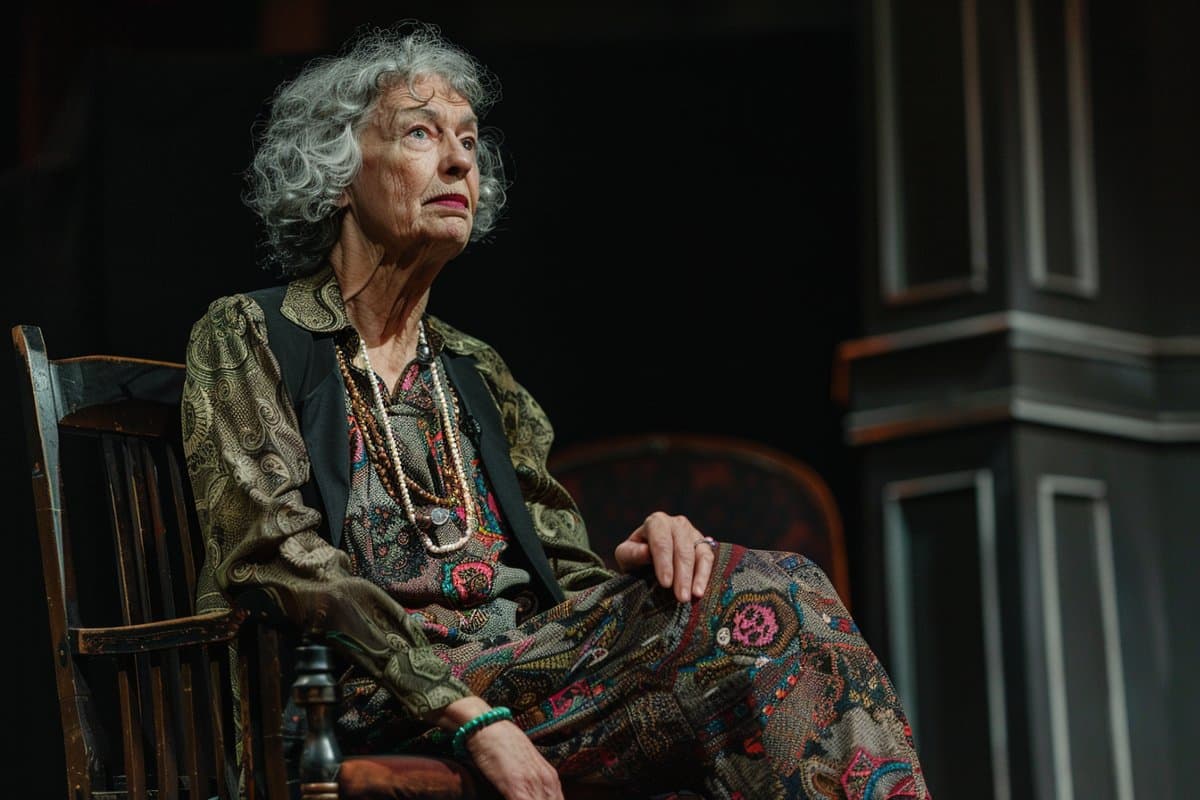Rethinking Reminiscence: Theater’s Ageism Dilemma Unveiled – Neuroscience News
Rethinking Reminiscence: Theater's Ageism Dilemma Unveiled Neuroscience News


Summary
A new study highlights the unintended ageist outcomes of Applied Theater, specifically reminiscence theater, which risks reducing older adults to mere storytellers of the past, overshadowing their current identities and contributions.
The research calls attention to how these practices, despite their positive intentions, may inadvertently perpetuate stereotypes and neglect the present lives and agency of participants. To combat this, the study introduces an Anti-Ageism Praxis (AAP) framework focusing on co-creation, present responses, and challenging stereotypes, aiming to foster more ethical and inclusive applied theatre practices that truly value older adults’ voices and experiences.
Key Facts:
- Unintended Ageism: The study reveals how reminiscence theatre can inadvertently encourage ageist views by focusing solely on older adults’ pasts, neglecting their current lives and perspectives.
- Anti-Ageism Praxis (AAP): A new framework proposed to ensure applied theatre practices are inclusive, emphasizing co-creation, present responses, and the dismantling of stereotypes.
- Ethical Practice in Focus: The research underscores the importance of ethical practices in applied theatre, aiming to respect and amplify the voices and agency of older adults, aligning with the UN’s SDGs on health, well-being, and reducing inequalities.
Source: University of Surrey
Imagine your grandmother’s life story distilled into a performance, applause washing over her as strangers dissect her past. Sounds heart-warming, doesn’t it? Not so fast, warns a new study from the University of Surrey.
The study found that Applied Theater practices, particularly reminiscence theater, could encourage ageism. This happens when we only see older adults as sources of stories from the past and forget to listen to their current thoughts, opinions, and hopes for the future.

Reminiscence theater is a form of interactive drama in which older adults share memories and experiences through dialogue, storytelling, and creative activities.
The study, led by Dr Georgia Bowers from the Guildford School of Acting, has shown that unconscious biases and assumptions can lead practitioners to unknowingly reinforce negative stereotypes about older adults. This can be particularly evident in reminiscence theatre, where focusing on extracting memories risks neglecting participants’ present experiences and agency.
Dr Georgia Bowers, Lecturer and Programme Leader of Applied and Contemporary Theatre BA (Hons) at the Guildford School of Acting and lead author of the study, said:
“It’s crucial to acknowledge that ageism exists within even well-intentioned practices like applied theatre. While reminiscence theatre offers valuable benefits, it can become problematic if we don’t prioritize co-creation, shared power, and a focus on participants’ present responses to their memories.”
The research proposes a new Anti-Ageism Praxis (AAP) framework to address these concerns. AAP emphasizes:
- Co-creation and shared power: Participants actively collaborate in shaping the project and final performative outcomes, ensuring that they are not only used for their recollections.
- Focus on present responses: Exploring how participants feel about their memories in relation to the present moment leads to focusing on the here and now and not solely on what has been.
- Challenging stereotypes: AAP prioritizes showcasing older adults’ diverse experiences and perspectives, fostering understanding, and dismantling ageist assumptions.
Dr Bowers continued:
“This research opens important conversations about ethical practice
SDGs, Targets, and Indicators
| SDGs | Targets | Indicators |
|---|---|---|
| SDG 3: Good Health and Well-being | Target 3.4: By 2030, reduce by one-third premature mortality from non-communicable diseases through prevention and treatment and promote mental health and well-being. | No specific indicators mentioned in the article. |
| SDG 10: Reduce Inequalities | Target 10.2: By 2030, empower and promote the social, economic, and political inclusion of all, irrespective of age, sex, disability, race, ethnicity, origin, religion, or economic or other status. | No specific indicators mentioned in the article. |
1. Which SDGs are addressed or connected to the issues highlighted in the article?
SDG 3: Good Health and Well-being
The article highlights the importance of ethical practices in applied theater to respect and amplify the voices and agency of older adults. This aligns with SDG 3, which aims to promote good health and well-being for all individuals.
SDG 10: Reduce Inequalities
The article emphasizes the need to challenge stereotypes and ensure inclusive practices in applied theater. This aligns with SDG 10, which aims to reduce inequalities and promote social, economic, and political inclusion for all individuals.
2. What specific targets under those SDGs can be identified based on the article’s content?
Target 3.4: By 2030, reduce by one-third premature mortality from non-communicable diseases through prevention and treatment and promote mental health and well-being.
Although not explicitly mentioned in the article, the focus on promoting the voices and experiences of older adults in applied theater can contribute to promoting mental health and well-being, which is a target under SDG 3.4.
Target 10.2: By 2030, empower and promote the social, economic, and political inclusion of all, irrespective of age, sex, disability, race, ethnicity, origin, religion, or economic or other status.
The article highlights the importance of inclusive practices in applied theater and the need to challenge stereotypes. This aligns with Target 10.2, which aims to promote the social inclusion of all individuals, including older adults.
3. Are there any indicators mentioned or implied in the article that can be used to measure progress towards the identified targets?
No specific indicators are mentioned or implied in the article that can be used to measure progress towards the identified targets. However, indicators related to the well-being and inclusion of older adults in applied theater could be developed to measure progress towards these targets.
SDGs, Targets, and Indicators
| SDGs | Targets | Indicators |
|---|---|---|
| SDG 3: Good Health and Well-being | Target 3.4: By 2030, reduce by one-third premature mortality from non-communicable diseases through prevention and treatment and promote mental health and well-being. | No specific indicators mentioned in the article. |
| SDG 10: Reduce Inequalities | Target 10.2: By 2030, empower and promote the social, economic, and political inclusion of all, irrespective of age, sex, disability, race, ethnicity, origin, religion, or economic or other status. | No specific indicators mentioned in the article. |
Behold! This splendid article springs forth from the wellspring of knowledge, shaped by a wondrous proprietary AI technology that delved into a vast ocean of data, illuminating the path towards the Sustainable Development Goals. Remember that all rights are reserved by SDG Investors LLC, empowering us to champion progress together.
Source: neurosciencenews.com

Join us, as fellow seekers of change, on a transformative journey at https://sdgtalks.ai/welcome, where you can become a member and actively contribute to shaping a brighter future.







